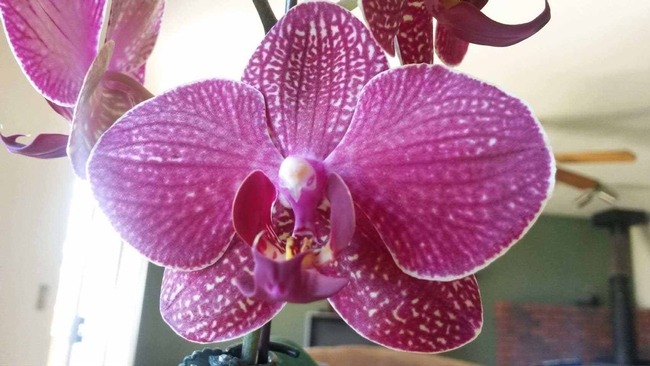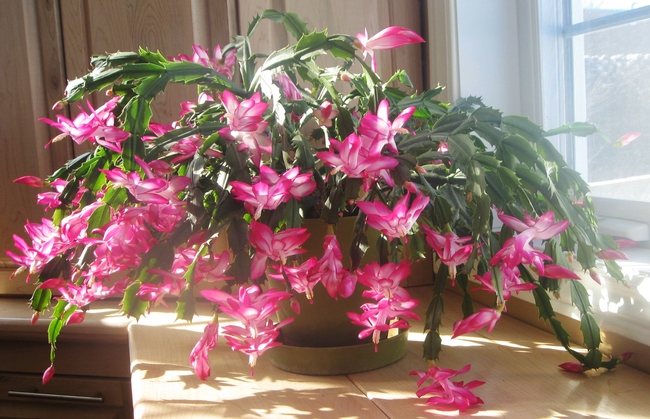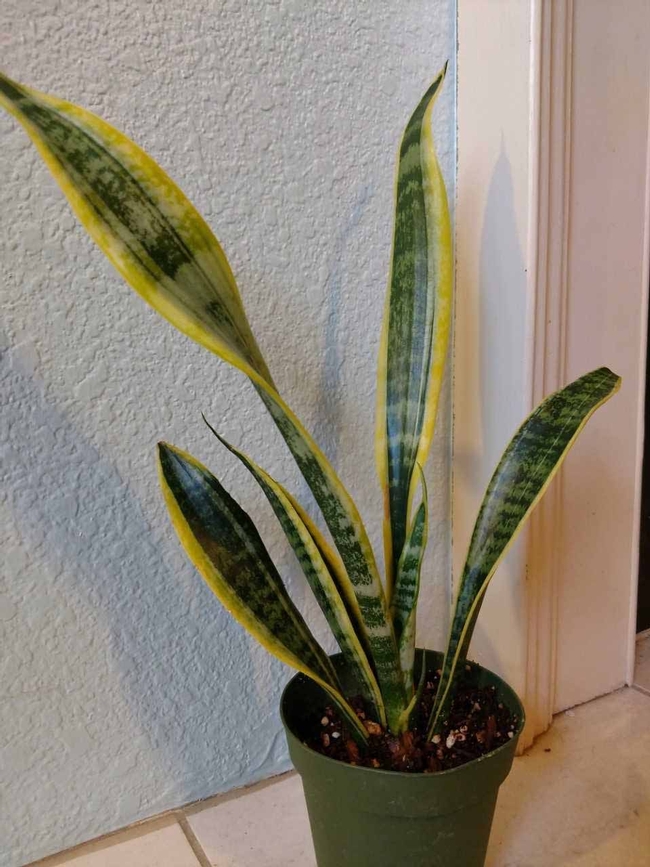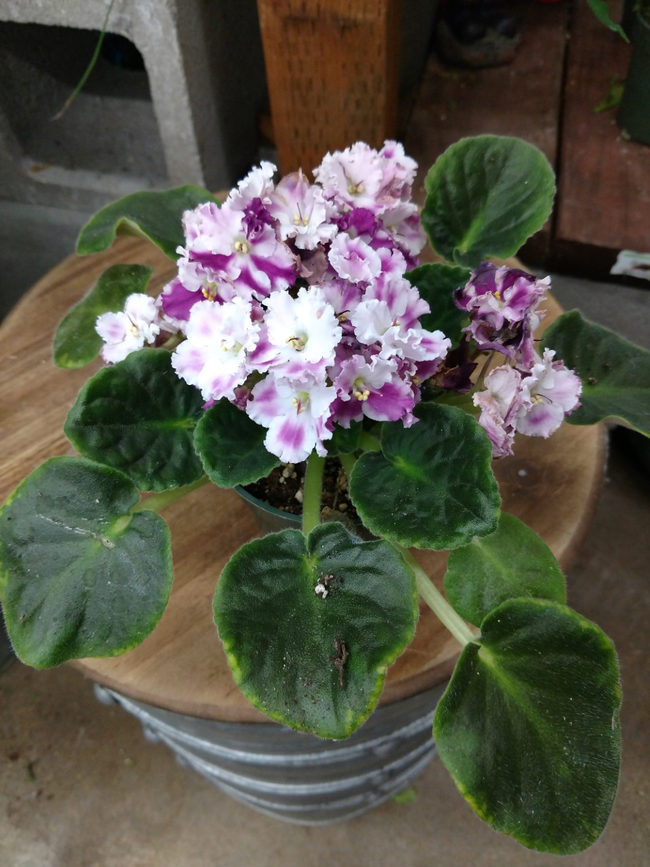By Emilee Fowkes Warne, UC Master Gardener of Butte County, February 16, 2018.
For the avid gardener, houseplants can be an excellent source of greenery and even flowers when the outside garden has gone gray and dormant in the doldrums of mid-winter. The following are some of the best houseplants for the winter “windowsill garden.”
The Moth Orchid (Phalaenopsis spp.). One of the easiest orchids to grow indoors in our climate, the Moth Orchid can yield a rainbow of beautiful flower colors during their bloom time, which is typically between January and April. A flower spike will appear as early as November and, once the buds open, the flowers can last as long as three months. Once the flowers have finished blooming, save the old flower spike as long as it remains green. It will often branch from lateral buds the next year and the cycle begins again, yielding new flowers in late winter each year. Moth Orchids only require bright, indirect light, good drainage, and a short cold period in October when temperatures get down into the low 50s to remind them that it is time to bloom again.
ZZ Plant, also known as the Aroid Palm (Zamioculcas zamiifolia). Hailing from eastern and south Africa, the ZZ Plant makes an excellent houseplant that is well-suited for the beginning indoor gardener. It has naturally glossy leaves in a rich emerald green color that is very attractive in the home environment. More attractive still is the ZZ Plant's ability to tolerate low water and low light conditions. This plant's root system is comprised of an adapted rhizome which can store large amounts of water. In times of drought, the ZZ plant can draw upon this water source for many months to keep itself alive. In a pot, it should be watered sparingly (just two to three times each month) but very thoroughly watered at those times. The ZZ Plant prefers bright indirect light, but can tolerate a variety of conditions and exposures, including north, south, and east facing windows.
Christmas Cactus, Wikipedia Commons
Snake Plant or Mother-in-Law's Tongue (Sansevieria spp.). The Snake Plant is a familiar indoor plant that has been re-invented over the decades with the introduction of interesting new hybrids. S. cylindrica, for example, has unique cylindrical upright foliage that has become very popular in homes with modern minimalist décor. S. ‘Black Gold' is a fantastic cultivar that contrasts very dark green-nearly black foliage with a bright yellow margin. S. ‘Silver Queen' is a tall, upright, silvery sword-leafed version of the Snake Plant, great for use as an accent around the home. The Snake Plant is easy to grow – it has low water needs, can tolerate low light conditions, and has few pest problems.
African Violet by E. Warne



